
Associate the Neck
6 ideas to enhance your garden, terrace, and home
Contents
The Colocasia is a stunning tropical plant that is robust, vigorous, and sometimes even hardy depending on the varieties. Its beautiful lush foliage, green or black, adds a touch of exoticism to the garden and on the terrace. This perennial, commonly known as “Elephant Ear”, particularly enjoys moist locations and beautifully decorates the banks of a pond. It can also be grown in pots or indoors in our homes.
Discover 6 ideas for pairing Colocasia in the garden, near a pond, on the terrace, or in the house.
On the banks of a pond
Colocasia is a plant that particularly enjoys moist, waterlogged soils. With its beautiful exotic foliage, it will wonderfully decorate a marshy area or the bank of a pond. It can even be planted directly in a body of water, taking care to place it in a basket filled with aquatic soil at water level. This way, it can be easily overwintered if necessary.
Its beautiful exotic foliage will pair wonderfully with other aquatic plants, such as Water Lilies, the upright and variegated foliage of Acorus calamus ‘Variegatus’, a Flowering Butomus, and Water Clover. On the edges of the bank, it can be combined with the beautiful foliage of ferns, a gunnera, the lovely Iris pseudacorus with yellow flowers, and the pretty candelabra primroses. To give your pond a touch of the exotic, you could install a bamboo that quenches its thirst at the water’s edge or a beautiful Papyrus with its feet in the water. To perfect this lush scene, you can add a Variegated Japanese Sweet Flag (Acorus gramineus ‘Ogon’), which is a magnificent grass providing a beautiful bright contrast.
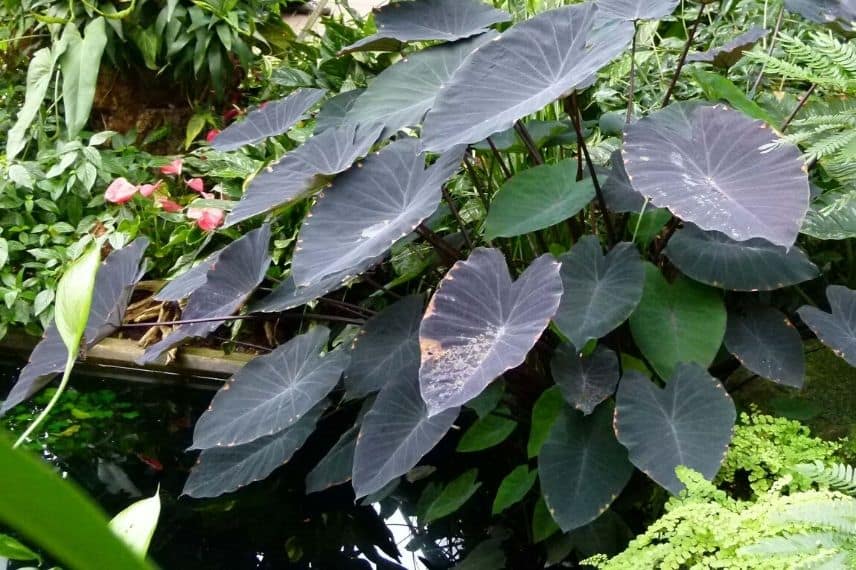
The Colocasia ‘Black Magic’ thrives at the water’s edge, alongside an Elegant Capillary, ferns, and other lush plants.
In an exotic garden
Originating from East Asia, colocasia is a tuberous perennial with beautiful, large foliage that will blend perfectly into an exotic setting. Moreover, the humidity and warmth of these gardens will suit it perfectly. It is best planted alongside other exotic plants with lush vegetation, such as banana plants for their height, a Tetrapanax for its dissected leaves, and Gunneras for their oversized foliage. To add a floral touch in warm colours, consider installing crocosmias, a Hedychium, a few Cannas, a Kniphofia, a Watsonia, and not forgetting the magnificent Arums. A cordyline or a New Zealand flax will provide a lovely contrast with their narrow, colourful, upright leaves. A palm tree, a Fatsia, or a tree fern will enhance this rather original decor.
Discover other Colocasia
View all →Available in 2 sizes
Available in 2 sizes
Available in 1 sizes
Available in 2 sizes
Available in 1 sizes
Available in 1 sizes
Available in 3 sizes
Available in 1 sizes
Available in 1 sizes
Available in 2 sizes
In a garden of black and green hues
Black has the unique ability to make all other colours stand out in the garden. The dark foliage of Colocasia ‘Black Magic’ or ‘Madeira’ offers sublime shades where black and dark green blend beautifully. To create harmony, we will install a few bushes with dark foliage, such as Albizia ‘Summer Chocolate’ in mild climates, Black Elder ‘Black Lace’, and Smoke Tree ‘Royal Purple’. Among the perennials, Pennisetum setaceum ‘Rubrum’ will follow suit, as will Astilbe ‘Chocolate Shogun’ and Rodgersia pinnata ‘Bronze Peacock’.
To avoid a too “heavy” and dull appearance, we will enhance this decor with a few plants featuring bright foliage, such as that of Lysimachia nummularia ‘Goldilocks’, which forms a golden groundcover. To add even more brightness, include a Hakonechloa macra ‘Aureola’, a Persicaria amplexicaulis ‘Golden Arrow’, or even Physocarpus ‘Dart’s Gold’.
You can also add a floral and warm touch by incorporating some summer bulbs, such as gladioli, dahlias, a freesia, or a few lilies. In sunny spots, you can even include some large agapanthus for their stunning blooms.
Read also
How to design a tropical garden?In a conservatory or a warm greenhouse
Colocasia is very frost-sensitive and tends to disappear underground when temperatures drop below 15 °C. Thus, it will particularly appreciate the warmth and humidity of a conservatory or greenhouse, especially if they are heated. Its beautiful large leaves will add a lovely touch of exoticism, especially alongside lush plants, such as a dwarf palm, a banana plant, or a small bamboo. Ferns, particularly the capillary fern, will also make good companions in this humid environment, with their graphic foliage, as well as Hostas or Fatsia japonica. To add a floral touch, you could place a Fuchsia or the Agapanthus ‘Fireworks’ nearby, with its beautiful and original blue and white flowers.
In the house
Colocasia, a cousin of our beautiful indoor Alocasias, can also find its place in the home. It will thrive when grown in a bright room, but without direct sunlight during the hottest hours of the day. It can be placed behind a window facing west or east, or south behind a sheer curtain, or in a bathroom alongside an elegant Capillary, a Chamaedorea elegans (bamboo palm), and Pilea mollis. The company of other plants helps maintain a slightly humid atmosphere in our sometimes too dry interiors, which will aid its development. The Fatsia japonica will also make a good companion with its magnificent cut foliage or variegated white cream in the variety ‘Spider’s Web’. In a water room, you can add exoticism by placing a Papyrus or a Pogonatherum paniceum (dwarf bamboo) beside it.
In a pot
Colocasia is easily grown in pots if care is taken to keep its substrate moist, but without excess and never allowing it to dry out. With its large exotic leaves, it will add a lush touch to a terrace or balcony. It should be placed in partial shade, avoiding the hottest hours of the day to prevent the substrate from drying out too quickly. The large foliage of Colocasia will contrast beautifully with the small variegated and bright leaves of the Plectranthus coleoides ‘Variegatus’ or the tall slender stems of Arundo donax ‘Versicolor’. To maintain the exotic theme, place nearby a Fatsia japonica ‘Spider’s Web’ with its beautifully cut foliage or a Papyrus with its airy stems.
For flowers, choose varieties with warm colours such as Cannas, Impatiens, Begonias, and Dahlias. To create a perfect scene, add some Coleus with scarlet or dark foliage and an Anthurium.
For further reading
- Discover all our varieties of Colocasias.
- To find out everything, browse our sheet on Colocasia: how to plant, grow, and maintain.
- Subscribe!
- Contents
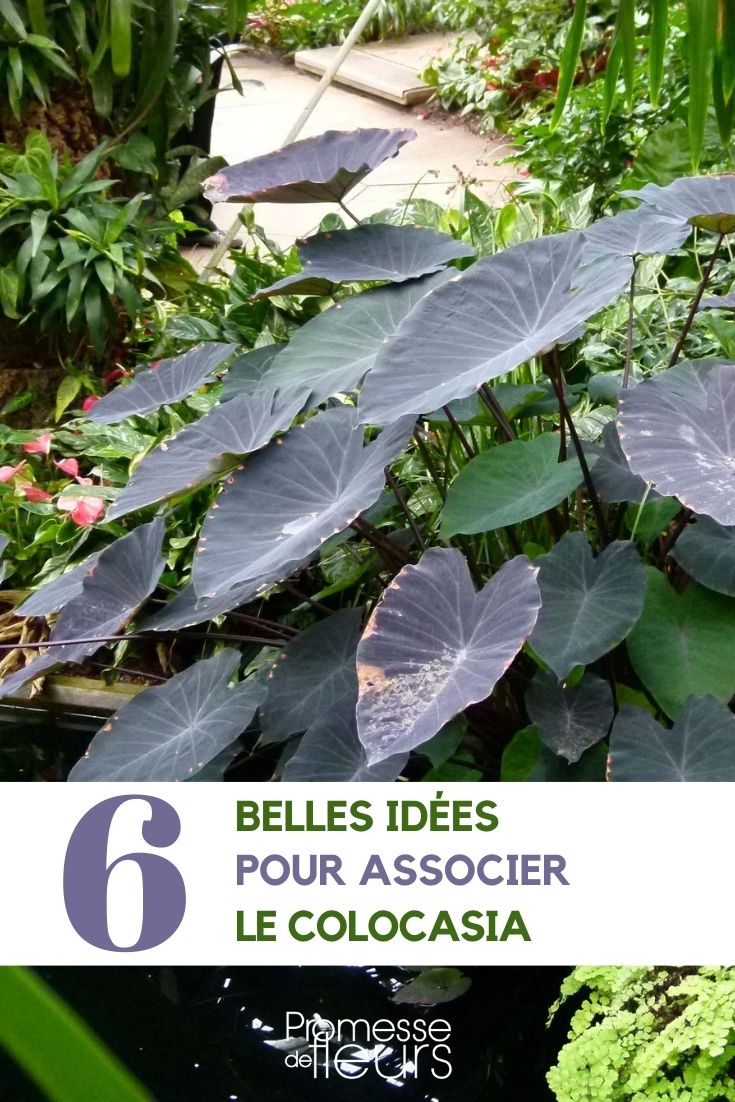






























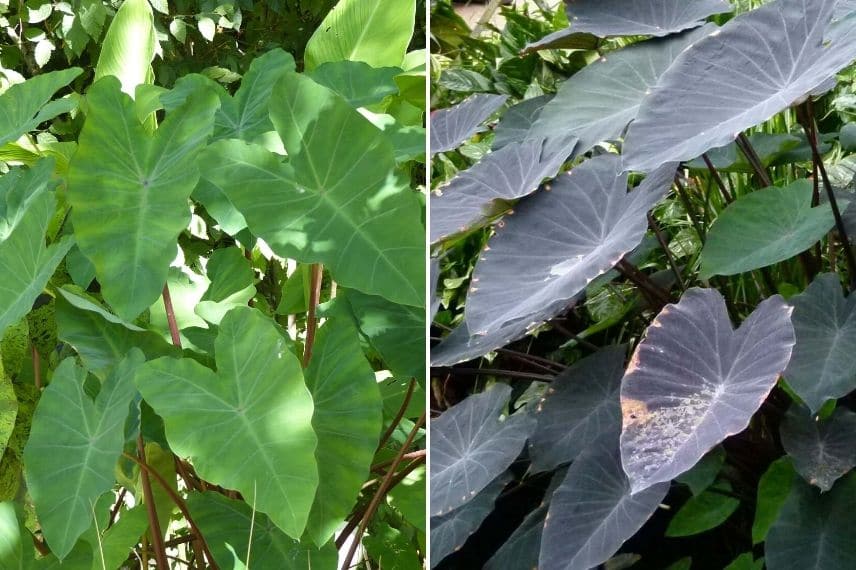

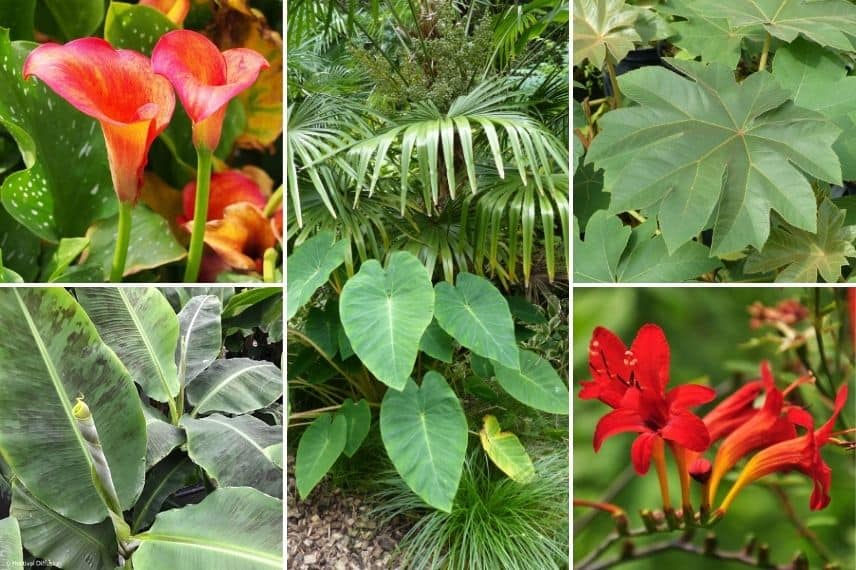

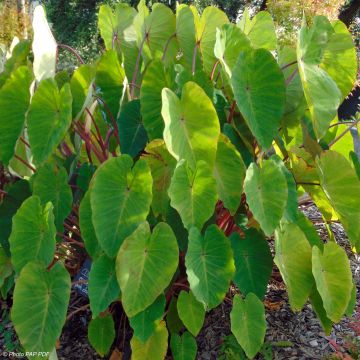

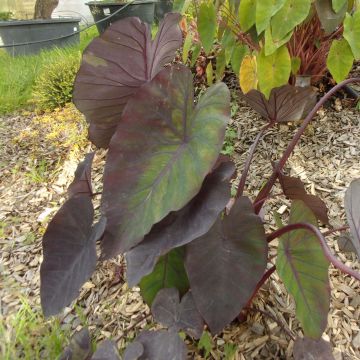


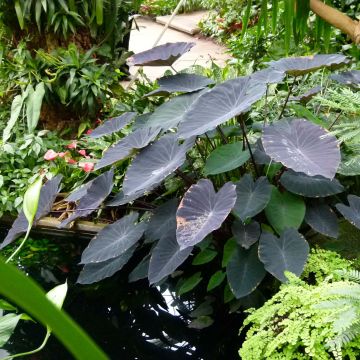

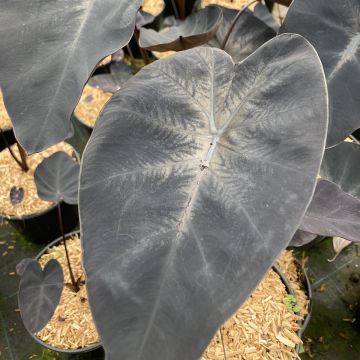
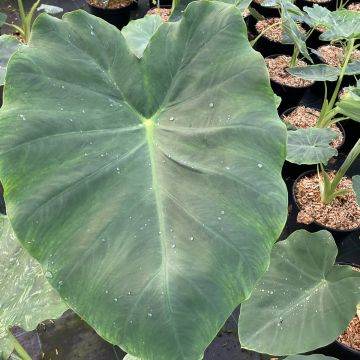
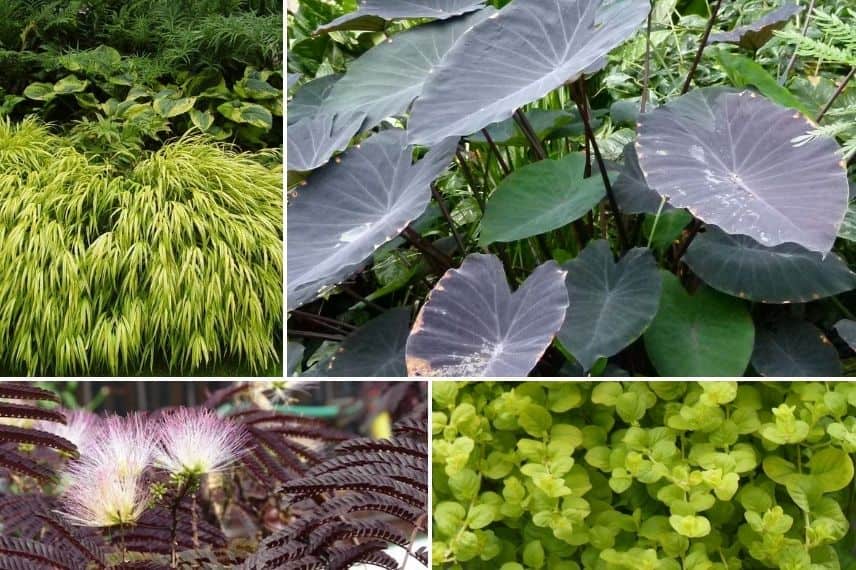
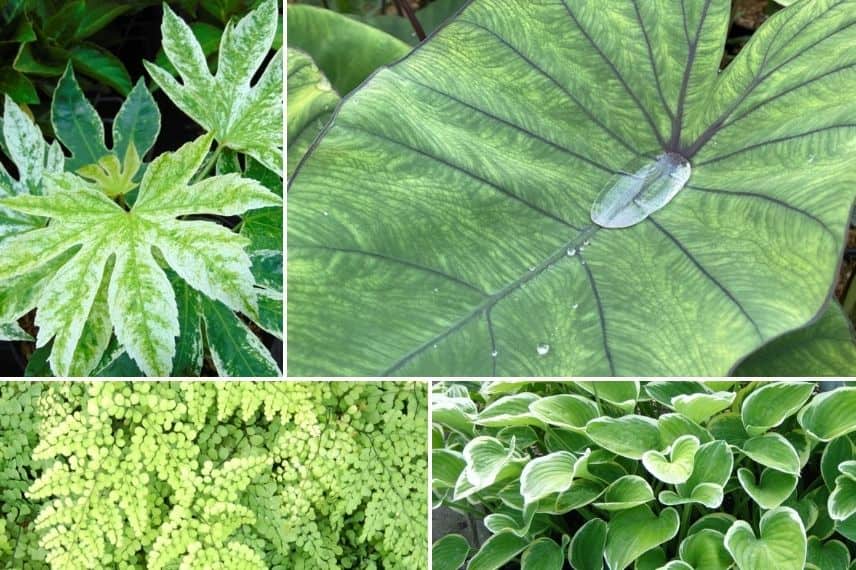
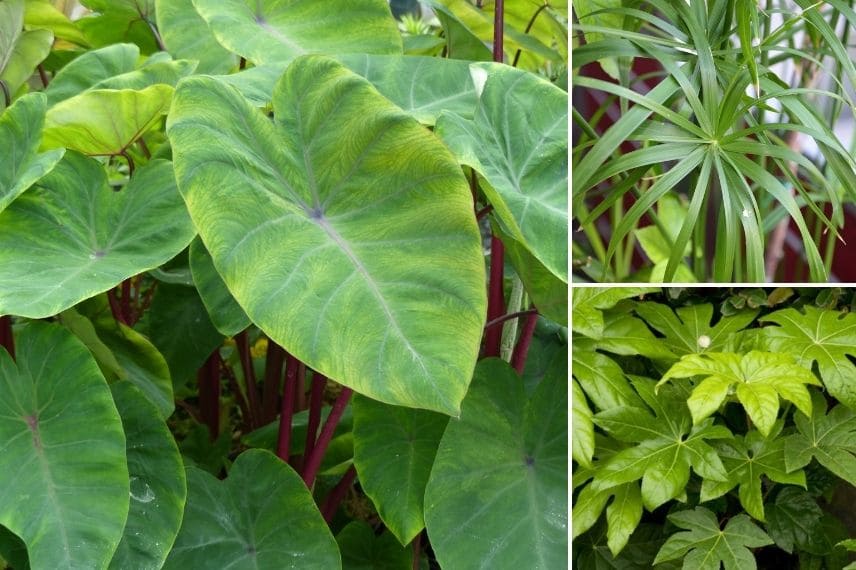
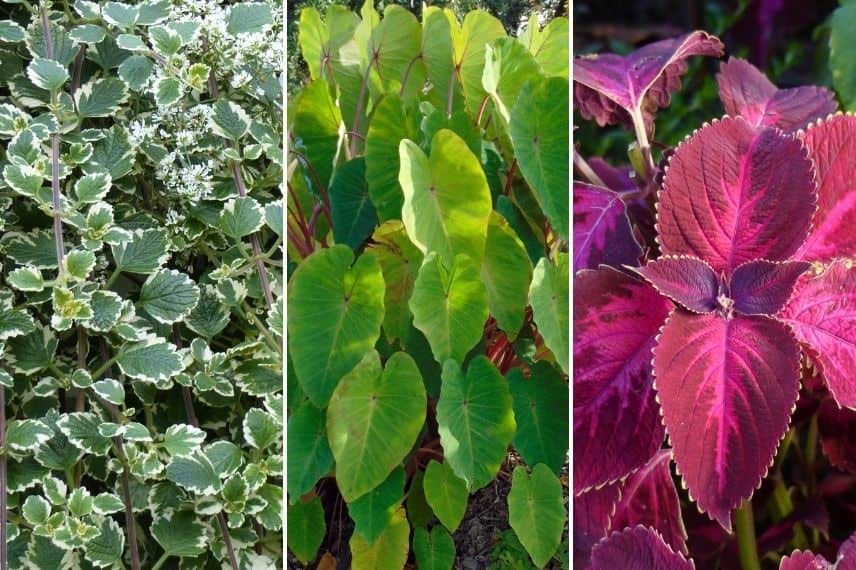
Comments